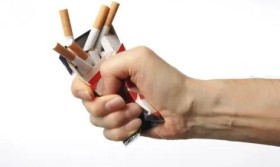How to Quit Smoking Gradually: A Phased Approach
Smoking cessation is a challenging journey that requires determination, strategy, and support. While some individuals succeed with abrupt quitting, many find that a gradual, phased approach reduces withdrawal symptoms and increases the likelihood of long-term success. This method allows smokers to slowly adjust both physically and psychologically, making the transition to a smoke-free life more manageable. Here’s a comprehensive guide to quitting smoking gradually through a structured, multi-phase plan.
Phase 1: Preparation and Mindset Shift (Weeks 1-2)
The first phase focuses on mental preparation and building a strong foundation for change. Without proper mindset and planning, attempts to quit often fail.
Set a Clear Quit Date
Choose a specific date, ideally 2-4 weeks in the future, to completely stop smoking. This gives you time to prepare mentally and logistically.
Identify Triggers
Keep a smoking journal to note when and why you smoke. Common triggers include stress, social situations, coffee, or boredom. Recognizing these patterns is crucial for developing coping strategies.
Set Realistic Goals
Define what “gradual quitting” means for you. For example, you might aim to reduce cigarette consumption by 25% each week until your quit date.
Seek Support
Inform friends, family, or colleagues about your plan. Consider joining a support group or using apps designed to track progress and provide encouragement.
Consult a Healthcare Professional
Discuss nicotine replacement therapy (NRT) or medications like bupropion or varenicline. These can ease withdrawal symptoms when used as part of a gradual reduction plan.
Phase 2: Gradual Reduction (Weeks 3-6)
In this phase, you actively reduce the number of cigarettes smoked each day while implementing behavioral changes.
Reduce Cigarette Consumption
Use your journal to identify which cigarettes are least important to you. Start by eliminating those. For instance, if you often smoke after meals, try replacing that cigarette with a walk or chewing sugar-free gum.
Delay Smoking
When a craving hits, delay smoking by 10-15 minutes. Often, the urge will pass or weaken, helping you gain control over impulses.
Switch to Lower-Nicotine Brands
Some people find it helpful to transition to brands with lower nicotine levels. However, be cautious—this may lead to compensatory smoking (e.g., inhaling more deeply). Combine this strategy with behavioral changes.
Use Nicotine Replacement Therapy (NRT)
NRT products like patches, gum, or lozenges can help manage nicotine cravings as you reduce cigarette intake. They provide a controlled dose of nicotine without the harmful chemicals in tobacco.
Change Routines
Alter habits associated with smoking. If you smoke with coffee, switch to tea. If you smoke during breaks, take a short walk instead.
Phase 3: The Quit Date and Immediate Aftermath (Week 7)
This is when you stop smoking entirely. Preparation from previous phases will make this transition smoother.
Remove Smoking Paraphernalia
Discard all cigarettes, lighters, and ashtrays. Clean your home, car, and workspace to eliminate the smell of smoke, which can trigger cravings.
Stay Busy
Plan activities for your quit day to keep your mind occupied. Exercise, hobbies, or spending time with non-smoking friends can distract from cravings.
Use NRT or Medications
Continue using NRT or prescribed medications to manage withdrawal symptoms like irritability, anxiety, or difficulty concentrating.
Practice Relaxation Techniques
Deep breathing, meditation, or yoga can help reduce stress and counteract the urge to smoke.
Celebrate Small Victories
Acknowledge milestones, such as 24 hours or 7 days without smoking. Reward yourself with something enjoyable—a movie, a favorite meal, or a new book.
Phase 4: Consolidation and Maintenance (Weeks 8 and Beyond)
The final phase focuses on maintaining a smoke-free lifestyle and preventing relapse.
Avoid Triggers
Continue to steer clear of situations where you might be tempted to smoke. If you used to smoke at parties, let friends know you’ve quit and avoid alcohol initially if it lowers your resolve.

Manage Cravings
Cravings may still occur but will become less frequent and intense over time. When they happen, use distraction techniques, drink water, or practice deep breathing.
Build a Healthy Lifestyle
Incorporate regular exercise, which reduces stress and improves mood. Eat a balanced diet to avoid weight gain, a common concern among those who quit smoking.
Seek Ongoing Support
Stay connected with support groups or apps. Many people benefit from long-term counseling or nicotine-free communities.
Learn from Slips
If you slip and smoke a cigarette, don’t view it as a failure. Analyze what led to the slip and reinforce your strategies. recommit to quitting immediately.
Conclusion
Quitting smoking gradually through a phased approach allows for a smoother transition to a nicotine-free life. By preparing mentally, reducing intake systematically, and leveraging support and tools, smokers can increase their chances of success. Remember, quitting is a process, and each step forward is a victory. With patience and perseverance, a healthier, smoke-free future is within reach.










